| The Aglaonema genus is now popular as an interiorscaping plant, and for a very long time before, were houseplants. But most people do not know their name. They are prized for foliage, not flowers or fruit. Most of the two dozen species live in dim humid forests of subtropical E Himalaya to tropical & substropical Asia to New Guinea. Most grow less than 3 feet tall. They are collectively called Chinese Evergreens. A Chinese name, Wan Nian Qing, means "10,000 years green," --evergreen-- and the plant is thought to bring good fortune to its owner. |
| The leaves are hairless, crowded, varied and beautiful, often variegated; narrow usually; without smell if bruised; the sap not milky. Floral spathes are inconspicuous pale green to yellowish white around a creamy white core. Ripe fruits are showy bright red or orange. |
The old cultivars were silvery or white-leaved; new cultivars can feature pink or red, and were bred to perform better in indoor conditions. Give them good drainage, avoid glaring sun, keep them warm, and water often.
|
About 6 species have been reported edible as cooked vegetables. Caution: like most aroids, the plants have burning calcium oxalate crystals, so are presumably detoxified by a thorough cooking process.
Back |
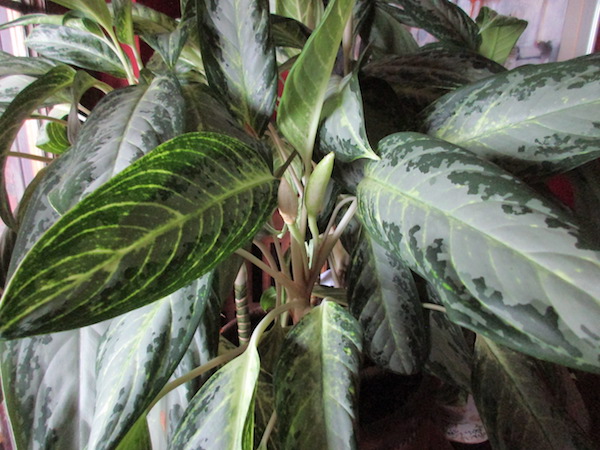
Aglaonema commutatum with developing flowers; photo by ALJ
|
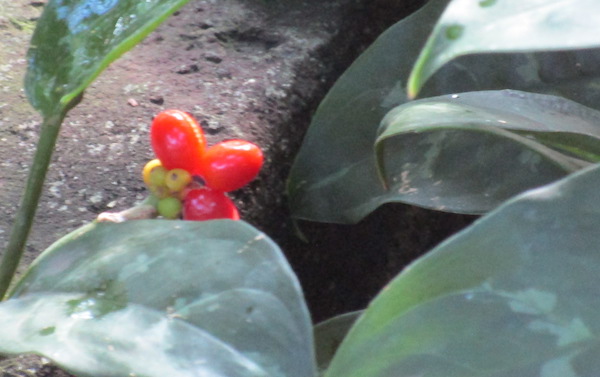
Aglaonema commutatum with fruit ; photo by ALJ
|
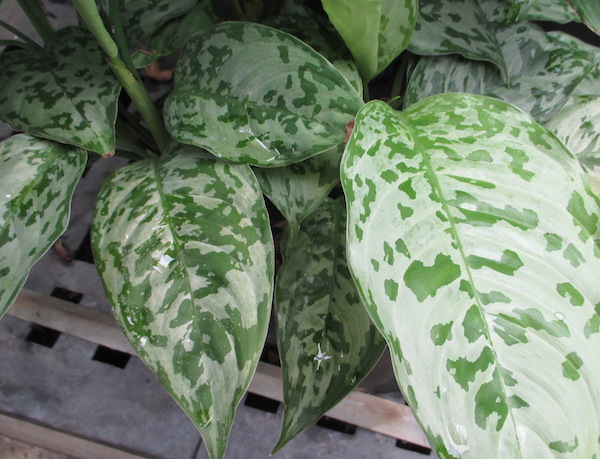
Aglaonema tricolor ; photo by ALJ
|
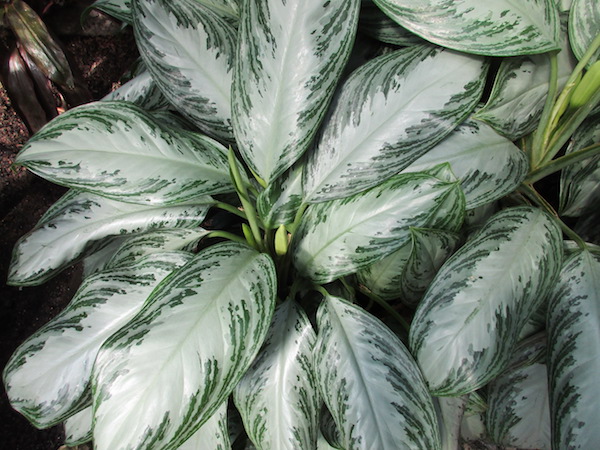
Aglaonema 'Silver Ray' ; photo by ALJ
|
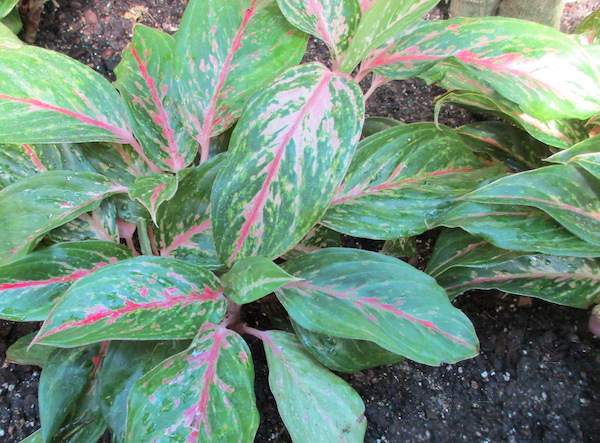
Aglaonema 'Sparkling Sarah' ; photo by ALJ
|
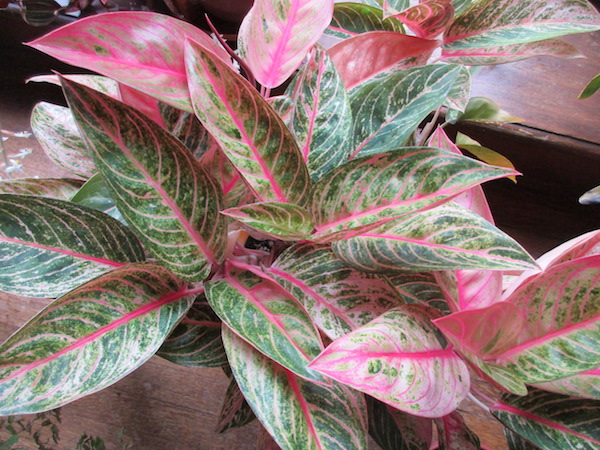
Aglaonema 'Legacy' (i.d. is my guess); photo by ALJ
|

